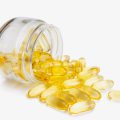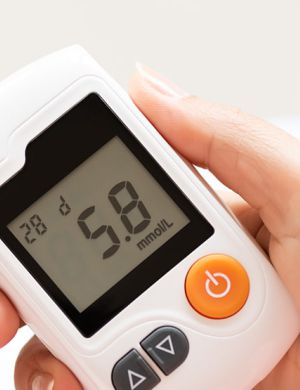
Cosmetic Labeling Requirements & Guidelines
To ensure consumer safety, it is crucial for cosmetic manufacturers to be meticulous in labeling their products. With many cosmetic items being easily accessible without a prescription, it is important for consumers to have access to accurate information about the ingredients in their makeup, skincare, and haircare products. By providing clear and comprehensive labels, manufacturers can empower consumers to make informed decisions about their beauty routine.
Product Identity and Principal Display Panel
The cosmetics distributed in the United States must comply with the labeling regulations published by the FDA under the authority of the FD&C Act and the FP&L Act. Labeling means all labels and other written, printed or graphic matter on or accompanying a product. The label statements required under the authority of the FD&C Act must appear on the inside as well as any outside container or wrapper. FP&L Act requirements, e.g., ingredient labeling and statement of the net quantity of contents on the principal display panel, only apply to the label of the outer container. The labeling requirements are codified at 21 CFR 701 and 740. Cosmetics bearing false or misleading label statements or otherwise not labeled in accordance with these requirements may be considered misbranded and may be subject to regulatory action.
The identity of the commodity may be expressed in terms of the common or usual name of the cosmetic, a descriptive name, or when the nature of the cosmetic is obvious, a fanciful name. It may also be expressed in form of an illustration.
The identity statement must be in bold type and in a size reasonably related to the most prominent printed matter, which is usually the name of the cosmetic. It must be in lines generally parallel to the base on which the product rests when displayed at retail.
Identity Labeling
- Common or usual name
- Descriptive name
- Fanciful name
- Illustration
- Prominence
- Placement
Principal Display Panel
The part of a label that the consumer sees or examines when displayed for retail sale
A label may consist of more than one panel. It may consist of a front panel, side panels and a back panel. Back and side panels are generally called information panels.
The FP&L Act also defines for consumer commodities, or packages containing a consumer commodity, the term “principal display panel,” otherwise known for short as PDP.
The “principal display panel” is that part of a panel that is most likely to be shown or examined under customary conditions of display for retail sale. Usually, it is the front panel of the label of the outer package.
Ingredient Listing and Allergen Information
Cosmetic Ingredient Labeling
Declaration of ingredients except flavor, fragrance, and trade secret ingredients in descending order of predominance
Cosmetic ingredient labeling became an issue in the early 1970s. Guidelines for ingredient labeling were published in mid-1972. Regulations were proposed in early 1973. After publication of two final regulations, stays of final regulations, terminations of stays, and lengthy court proceedings challenging the legality of the published regulations, the requirement for cosmetic ingredient labeling became fully effective in early 1977.
Since the FP&L Act applies only to consumer commodities and their packages as defined in the Act, cosmetic ingredient declarations are required only on the label of the outer container of cosmetics customarily sold at retail or used in the performance of services conducted within the households. It does not apply, for example, to products used at professional establishments or samples distributed free of charge, unless such products are customarily also sold at retail, even if they were labeled “For professional use only.”
The ingredients must be declared in descending order of predominance.
Identification of Ingredients by Name
- The name established by the commissioner as specified in § 701.30.
-
The name adopted for the ingredient as listed in:
- CTFA Cosmetic Ingredient Dictionary
- United States Pharmacopeia
- National Formulary
- Food Chemical Codex
- USAN and the USP Dictionary of Drug Names
- The name generally recognized by consumers
- The chemical or technical name or description
Order of Ingredient Declaration
- Descending order of predominance
- Exceptions
- Active drug ingredients
- Ingredients with less than 1% concentration
- Color additives
- “And other ingredients”
Net Contents, Batch Code, and Expiry Date
Quantity of Contents
Location: If the cosmetic is sold at retail in an outer container, the net contents statement must appear within the bottom 30% of the PDP of the outer container, generally parallel in line to the base on which the package rests, and on an information panel of the inner container. The bottom location requirement is waived for PDPs of 5 square inches or less.
The PDP may be a tear-away tag or tape affixed to a decorative container or to a container of less than 1/4 oz., or it may be the panel of a display card to which the container is affixed.
Prominence: The declaration must be a distinct item, separated from other printed matter by a space equal to at least the height of the lettering used in the declaration and twice the width of the letter “N”.
Conspicuousness: The print must be easily legible bold face type in distinct contract to background and other matter on the package. The letter height must be at least that of the lower case letter “o”, and the aspect ratio of height to width must not exceed 3:1.
The type size, as determined by the area of the PDP must be at least 1/16 in. if PDP area 5 sq. in., 1/8 in. if PDP area > 5 to 25 sq. In., 3/16 in. if PDP area > 25 to 100 sq. in., and 1/4 in. if PDP area > 100 sq. in.
Exemptions from Net Contents Declaration
Cosmetics of less than 1/4 av. oz. or 1/8 fl. oz.
- On display card
- In outer container
Cosmetics in packages containing less than 1/4 av. oz. or 1/8 fl. oz. are exempt from the net quantity of contents declaration if affixed to a properly labeled display card or sold at retail in a properly labeled outer container.
When a cosmetic is required to bear net quantity of contents declarations on the inner and outer container, the declaration on the outer container must appear on the PDP; on the inner container, it may appear on an information panel other than the panel bearing the name of the product, i.e., the front panel.
Regulations require that “[the label of a cosmetic product shall bear a warning statement whenever necessary or appropriate to prevent a health hazard that may be associated with the product” [21 CFR 740(1)]. A cosmetic not bearing a necessary warning statement may be considered misbranded under sec. 602(a) of the FD&C Act because it fails to reveal a fact “material … with respect to consequences which may result from the use of the article” [sec 201(n), FD&C Act].
Prominence: A warning statement must appear on the label prominently and conspicuously as compared to other words, statements or designs so that it is likely to be read by ordinary consumers at the time of purchase and use.
Conspicuousness: The lettering must be in bold type on contrasting background and may in no case be less than 1/16 inch in height.
Don’t miss out! Click here to stay in touch.
Categories
- Biopharma (47)
- Consumer Health (15)
- Cosmetics (8)
- Diagnostics (5)
- Digital Health (8)
- Food (2)
- Medical Device (100)
- OTC (3)
- Regulatory Intelligence (5)
- Standards (40)
Recent Blogs
Get the latest updates from Vistaar

Related Posts
CONNECT WITH US

Let's talk about how DDi can help you







